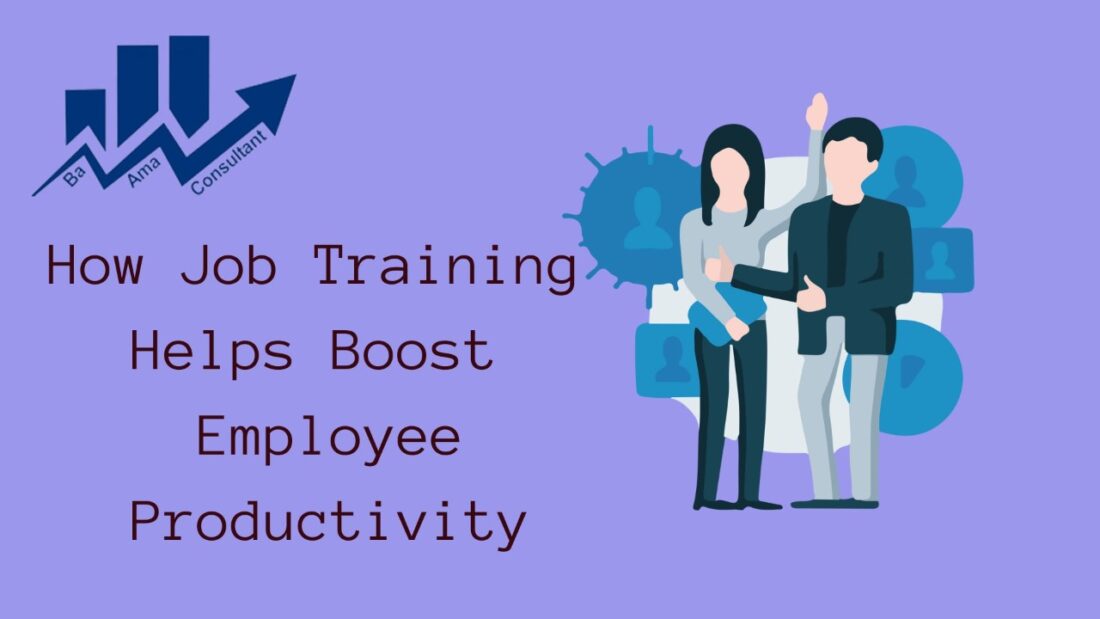Did you know that providing on-the-job training might result in over 70% more applications being received for a position that is open? Training and development should not just focus on instructing staff members how to carry out certain jobs; it should also provide them the chance to develop into lifelong learners, which will hence increase employee productivity.
Being productive at work is an essential component of every business. Employees should have generated and delivered quality outputs at the conclusion of each workday. That is the core of how businesses succeed.
As a result, it seems to reason that a business will do all in its power to assist employees in becoming more successful. Providing high-quality staff training is one of these strategies. However, that aspect of a productive workforce is not always completely accepted by today’s organizations.
What is Employee Training and Employee productivity?
Employee training and development is a program that is expressly designed to sharpen employees’ skills and knowledge so that their employee productivity increases rapidly. Training improves an employee’s necessary skill set while also promoting the organization’s general growth and development.
The primary outcome of such staff training programs is learning. Employees do not need to undergo time-consuming on-site work training, thanks to technology advancements. Cloud-based training management systems are available that promote flexible learning and make your staff feel appreciated.
An employee’s productivity is defined as the value they provide to each task they are responsible for. More productivity means more value created by employees for the organization. It is also known as an efficiency evaluation of an individual’s or group’s contribution to achieving business objectives within specified time frames.
Low engagement, a lack of communication and leadership, a dull work culture, and other factors all contribute to lower productivity. Develop the ideal culture to increase staff productivity.
Does training improve productivity?
According to study, one method to keep staff productive is to ensure they are effectively trained for their roles. Several studies have revealed a clear link between staff training and development, increasing the employee productivity throughout the years.
According to Gallup, when employees understand their tasks and their abilities are respected and encouraged, it produces a workplace culture that supports high performance and increased productivity. According to the study, strengths-based businesses boost employee performance by 8% to 18%.
Indeed, strengths-based leadership has been identified as a critical component in fostering staff optimism, engagement, and project performance—all of which contribute to dramatically increased productivity.
Five Ways Job Training Improves Productivity
Employee training and work productivity are inextricably linked. Companies that recognize the value of a highly productive workforce should embrace the power of employee training.
The following are the top five ways that training improves employee work performance and productivity.
1. Enhances employee satisfaction
A happy work environment is a productive work environment. Employees are happy when they are provided the skills and information they need to do their jobs well. Training is a vital step in giving your staff the skills they need to function at their best.

2. Enhances employee retention
Implementing training programs in the workplace will make employees feel as though the organization cares about them. By continuing to educate your staff with new skills and talents, they will feel like more effective members of the firm, not just better workers. This will boost their morale as well as their ability on the job.
3. Enhances performance-based cultures
Another advantage of offering staff training and development programs is that it improves business culture. Training and development opportunities align with the pillars of a strong company culture as described by Chris Dyer in his book The Power of Company Culture published in 2018:
- Transparency entails communicating organizational facts such as employee feedback and financial status.
- Accepting difficulties while capitalizing on an organization’s assets.
- Measurement is the process of gathering, measuring, and analyzing data.
- Recognition entails praising and rewarding good performance.
- Advancing the company’s unique traits
- Promoting active listening that results in action.
- Creating an atmosphere in which workers may learn from their mistakes.
Dyer believes that as part of a strong culture, corporate leaders should be upfront about the value of training and development to the organization and its employees.
Training and development programs can assist in strengthening organizational culture in the following ways.
- Getting Rid of the Need for Constant Supervision
- Recruiting and Retaining Talent Increasing Employee Morale
- Providing a Route to Success
- Making Employees Feel Appreciated
- Increasing Employee Understanding of Company Culture
- Accepting Individual Values
- Improving a Company’s Reputation
4. Provides promotion preparation for employees
Job training fosters a culture of lifelong learning and excellence while increasing employee productivity. It also assists employees in understanding what is expected of them and what will determine their success. Employee productivity rises in an environment that values quality and performance. That is ensured via on-the-job training.

5. Promotes long-term success for organizations
People are one of the most important factors in an organization’s long-term success. Job training is unquestionably crucial in safeguarding human capital and developing powerful leaders. It is vital for an organization’s success to upskill and reskill employees to transition into these roles. When talent advances, the company advances to the next level.

